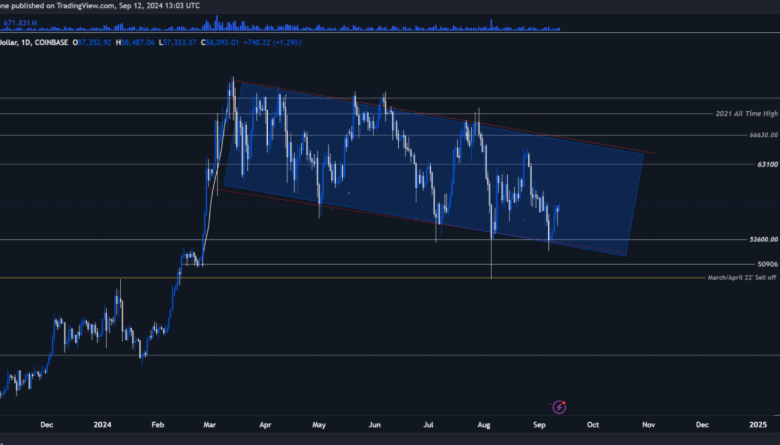ETH vs BTC: What the ETH/BTC Chart Reveals About Ethereum’s Strength

Introduction
Why Compare Ethereum and Bitcoin?
Bitcoin (BTC) and Ethereum (ETH) are the titans of the cryptocurrency market. Bitcoin is known as digital gold, while Ethereum is a revolutionary blockchain that supports smart contracts and decentralized applications. Understanding the comparison between these two giants provides insights into broader market dynamics and helps investors make informed decisions.
The Importance of the ETH/BTC Trading Pair
The ETH/BTC chart measures the value of Ethereum relative to Bitcoin. It’s not about fiat value but rather how many Bitcoins one Ethereum is worth. This trading pair is crucial for gauging Ethereum’s performance against its biggest competitor and is widely used by traders and analysts to forecast potential shifts in market dominance.
Understanding the ETH/BTC Chart
What Is the ETH/BTC Chart?
The ETH/BTC chart shows the price of ETH denominated in BTC. Instead of looking at how ETH or BTC performs in USD, this chart shows how they perform against each other. If the chart goes up, ETH is gaining strength against BTC; if it goes down, BTC is outperforming ETH.
How to Read It Effectively
Reading the ETH/BTC chart requires understanding:
- Trends: Is ETH gaining or losing value relative to BTC?
- Support and Resistance Levels: Key price points where ETH may stop falling or rising.
- Volume Patterns: Insights into how much ETH is being traded compared to BTC.
Technical Indicators on the ETH/BTC Chart
Moving Averages
Moving averages smooth out price data. The 50-day and 200-day moving averages are especially important. When the 50-day crosses above the 200-day (a “golden cross”), it indicates bullish momentum for ETH relative to BTC.
RSI and MACD
- Relative Strength Index (RSI): Helps spot overbought or oversold conditions.
- MACD (Moving Average Convergence Divergence): Shows trend strength and possible reversals.
Volume Trends
Increased trading volume on upward price movement suggests confidence in ETH, while declining volume may indicate weakening strength.
Historical Performance of ETH vs BTC
Key Milestones in ETH/BTC History
- 2017 Bull Run: ETH surged due to ICO mania.
- 2018 Crash: ETH/BTC plummeted as the market corrected.
- 2020-2021 DeFi Boom: ETH regained strength thanks to massive growth in decentralized finance.
Cycles of Dominance
ETH and BTC take turns leading the market. Understanding these cycles helps investors time entries and exits more effectively.
What ETH/BTC Reveals About Ethereum’s Strength
Signs of Bullish Momentum
When ETH/BTC climbs, it indicates investor confidence in Ethereum’s ecosystem. This can be due to technological upgrades, growing usage, or institutional interest.
Ethereum’s Market Position Relative to Bitcoin
A rising ETH/BTC ratio can mean Ethereum is catching up in utility, developer activity, and use case diversity—challenging Bitcoin’s long-held dominance.
Factors Driving ETH’s Strength Over BTC
Network Upgrades and Development (e.g., Ethereum 2.0)
Ethereum’s shift to proof-of-stake through Ethereum 2.0 greatly improved its scalability and energy efficiency, making it more attractive to environmentally conscious investors.
Growth in DeFi and Smart Contracts
The explosion of DeFi protocols, NFT marketplaces, and DAOs built on Ethereum has solidified its reputation as the backbone of Web3.
Comparative Utility: ETH vs BTC
Store of Value vs Smart Contract Platform
- Bitcoin is often compared to gold: a static store of value.
- Ethereum is dynamic and programmable: powering apps, platforms, and tokens.
Institutional Interest and Adoption Trends
While institutions view Bitcoin as digital gold, many are increasingly looking at Ethereum for its real-world utility and yield opportunities through staking.
Fundamental Analysis of Ethereum
Developer Activity
Ethereum consistently ranks highest in terms of active developers, a strong sign of innovation and ongoing improvement.
Transaction Volume and Gas Fees
High transaction volumes and gas fees point to heavy network usage, albeit with a downside of potential congestion.
Network Security and Decentralization
Ethereum maintains a robust network with thousands of nodes, ensuring security and resilience.
Sentiment Analysis and Investor Behavior
On-Chain Metrics
- Active Wallets
- Staking Growth
- ETH Burn Rate (EIP-1559)
These metrics reflect confidence and engagement.
Social Media Trends
Increased mentions of Ethereum on platforms like X (formerly Twitter) and Reddit correlate with price action and retail interest.
Exchange Flows
Outflows from exchanges suggest accumulation and long-term holding sentiment.
Use Cases That Boost Ethereum’s Value
NFTs and Metaverse Projects
Ethereum powers the most popular NFT platforms, including OpenSea and Decentraland, reinforcing its dominance in digital ownership.
DeFi Ecosystem
From Uniswap to Aave, Ethereum underpins thousands of DeFi applications offering lending, borrowing, and trading without middlemen.
Potential Risks to Ethereum’s Strength
Competition from Other L1 Chains
Rivals like Solana, Avalanche, and Cardano aim to outperform Ethereum in speed and cost. However, Ethereum’s network effect remains a formidable advantage.
Regulatory Challenges
Ongoing scrutiny from regulators could impact Ethereum, especially as it becomes more entwined with financial markets.
Future Projections for ETH/BTC
Analysts’ Predictions
Many analysts believe ETH could outperform BTC in the next bull cycle due to its growing utility and adoption.
Market Scenarios for 2025 and Beyond
- Bullish Scenario: ETH/BTC reaches 0.15
- Bearish Scenario: ETH/BTC falls below 0.05 due to market shifts or major disruptions
Investment Strategies Based on ETH/BTC
When to Accumulate ETH
Investors often buy ETH when the ETH/BTC ratio is low, anticipating future outperformance.
Portfolio Diversification Tips
Holding both ETH and BTC provides exposure to different aspects of the crypto market: value vs innovation.
How to Track ETH/BTC in Real Time
Best Tools and Resources
- TradingView
- CoinMarketCap
- Messari
- Glassnode
Setting Up Alerts and Dashboards
Real-time alerts for ETH/BTC movement help traders act swiftly during critical market moments.
Expert Opinions on ETH vs BTC
Insights from Market Analysts
Experts suggest Ethereum’s programmability gives it a long-term edge over Bitcoin, especially as blockchain expands into finance, gaming, and governance.
Developer and Institutional Perspectives
Developers lean toward Ethereum due to its flexibility, while institutions see ETH as both a technology and investment play.
Conclusion
Ethereum’s strength relative to Bitcoin is more than just price—it’s about usage, innovation, and vision. The ETH/BTC chart offers a powerful lens through which to view the evolving landscape of crypto. As Ethereum continues to build and scale, it stands poised to not just challenge Bitcoin—but perhaps redefine the crypto hierarchy altogether.
FAQs
What does the ETH/BTC chart tell us?
It shows how Ethereum performs relative to Bitcoin, indicating shifts in market preference and potential investment opportunities.
Is Ethereum expected to surpass Bitcoin?
Some analysts believe Ethereum could outperform Bitcoin in the next cycle due to broader use cases and technological upgrades.
How often should I check the ETH/BTC ratio?
Active traders may check it daily, while long-term investors might review it weekly or monthly for trends.
What are the best times to buy ETH?
Typically, when the ETH/BTC ratio dips, indicating ETH is undervalued relative to BTC.
Is ETH more volatile than BTC?
Yes, Ethereum generally experiences higher volatility due to its broader use and exposure to DeFi and NFTs.
Should I invest in both ETH and BTC?
Yes, diversifying into both assets balances risk and taps into the strengths of each crypto leader.







